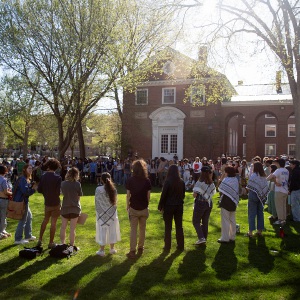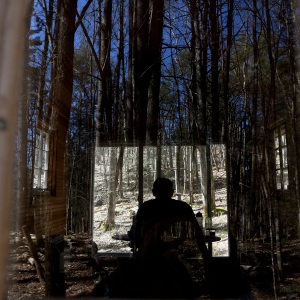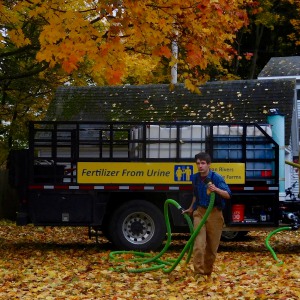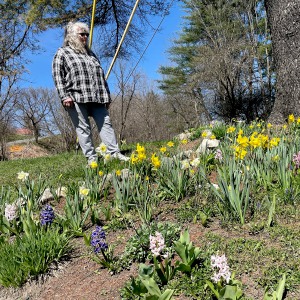A Look Back: A celebration of the square bale
| Published: 06-05-2023 1:47 AM |
It was by far the greatest technological advance of the 20th century for livestock farmers, and it lives on today serving what’s become a niche market of hobby farmers and horse owners. It’s the hay baler, and it’s a machine that can be pulled around a field to gobble up loose hay that’s been cured in the sun, stuff it into a neat 14- by 18-inch, 3-foot-long package and spit it out, bound with twine for convenient handling.
Ed Nolt, a Pennsylvania Mennonite, is credited with developing the hay baler, which gained widespread adoption in the Upper Valley and beyond in the years immediately after World War II. There had been stationary contraptions around for centuries that pressed hay into bundles, but Nolt’s idea was to take the machine to the field, speed up the process and deliver a package that farmers could easily gather to store away in the barn.
Haying for centuries had been a task that relied primarily on human labor — cutting the crop with sickles and scythes, raking it up, forking it onto wagons and then forking it again into mows at the barn. Nolt’s invention cut out a lot of the hard physical work, but not all.
Those bundles of hay the balers produced still had to be gathered up, transported to the barn and stacked away, and in various iterations that work occupied virtually every dairy and livestock farmer for the length of the season, plus legions of teenagers. For those youngsters, male and female, it was often the first real job experience of their lives, and memories have never been lost of those sweat-soaked stints gathering bales, hoisting them onto a truck bed and then wrestling them away as a clattering conveyor brought them deep into the hayloft to be boosted into ever-taller stacks.
From 1950 on, baled hay ruled on Upper Valley farms. A bale of hay became a virtual unit of currency. Everybody, farm-based or not, knew what a bale of hay looked like and how it could be valued in a cash or barter transaction. “A buck a bale” was a rule of thumb for decades. And the number of bales put in storage in a day often became the stuff of much bragging, and, of course, exaggeration.
No doubt about it, a teenaged kid bucking baled hay for a summer could build up muscle mass, strength and endurance. To hear oldsters talk today about their experiences is to make it seem like an idyllic time, though, especially if they tell of refreshing jumps into a swimming hole at the end of the day.
But if you worked on an outfit that put in hundreds of bales in a day, you would sleep well at night, for sure.
Farmers who operated in the 1960s and ’70s still dreamily talk about how young people would show up at their door begging to be hired to help get in the hay bales. A dollar or two an hour was the going wage for beginners, and sometimes there would be denizens of the local hippie communes showing up to buck bales for nothing beyond an experience they might record in a diary.
Article continues after...
Yesterday's Most Read Articles
 Dartmouth administration faces fierce criticism over protest arrests
Dartmouth administration faces fierce criticism over protest arrests
 Three vie for two Hanover Selectboard seats
Three vie for two Hanover Selectboard seats
 A Look Back: Upper Valley dining scene changes with the times
A Look Back: Upper Valley dining scene changes with the times
 Norwich author and educator sees schools as a reflection of communities
Norwich author and educator sees schools as a reflection of communities
That labor pool would begin to shrivel in the 1980s, however, and soon farmers were looking for ways to streamline the hay enterprise. New technology would come along from Europe and in a decade’s time the round baler would take hold rapidly and supplant the square bale as the most popular hay package in New Hampshire and Vermont.
Round balers gather up the crop and form it into rolls weighing hundreds or even thousands of pounds. These rolls can then be handled with tractor loaders, eliminating all need for workers on the ground. Much of the hay crop going into round bales is packaged within a few hours of being cut and then encased in plastic film, where it ferments and becomes high-quality forage for all ruminant animals. That’s what’s in those big white “marshmallows” seen in farmyards all over the Northeast.
But for what’s now called the “small square” hay bale, there continues to be a strong market, and considerable hay continues to be put up with the familiar tractor-drawn baler.
Horse people and backyard farmers aren’t set up to handle those behemoth round bales; they want a bale they can fit in the trunk of a Subaru and take home to their pony or goats from the feed store or friendly local hay dealer.
There’s nothing that’s easier than snipping the twine on a small square bale when feeding out hay to a critter, and that niche will help keep those good old Ed Molt-inspired field balers thumping away in Upper Valley fields this summer.
And there just may be a teenager or two around the region who will jump at the chance to help bring those square bales to the barn, rather than while away the summer at soccer camp or with video games.
Steve Taylor lives and farms in Meriden.









 Art Notes: Canaan Meetinghouse showcase brings musicians and listeners together
Art Notes: Canaan Meetinghouse showcase brings musicians and listeners together The future of fertilizer? Pee, says this Brattleboro institute
The future of fertilizer? Pee, says this Brattleboro institute From dirt patch to a gateway garden, a Randolph volunteer cultivates community
From dirt patch to a gateway garden, a Randolph volunteer cultivates community 
